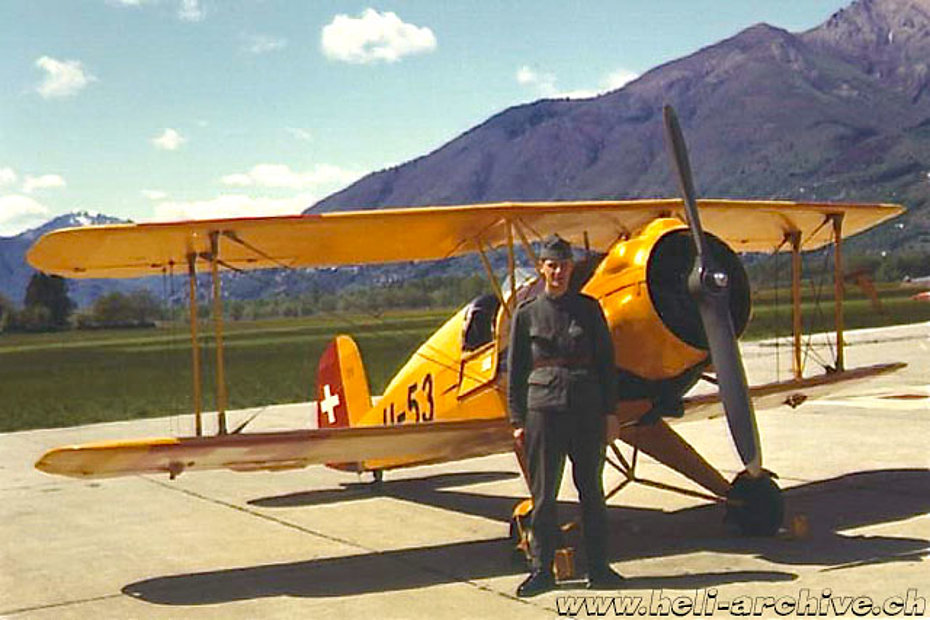
Refondini Silvio
Military pilot, civilian airplane pilot as well as professionnal helicopter pilot, flight instructor, flight examiner, consultant, and much more, Silvio Refondini is one of those people that when you interview, you would not stop asking questions. In his long lasting career spanning over 50 years he has done all kinds of activities in the field of rotary wing and has traveled all over the world. At seventy-two years he continues with his passion for flying.
Silvio Refondini was born in Lausanne/VD on November 6, 1944 at the city where his father had moved from Canton Ticino to work first as a mechanic and following as owner of a car garage. After the compulsory schools in Prilly he enrolled at the College Champittet in Lausanne where he obtained a commercial employee diploma. Ever since he was a little boy he dreamed of becoming an aeroplane pilot. As a teenager during his spare time, he liked to build airplanes and rockets. He remembers that one time during one of his experiments one of the rockets exploded, shattering the windows of some houses and creating havoc in the neighborhood.
One day her aunt aware of his passion for flying told him that there was an announcement in the newspaper for the selection of military pilots candidates.
At the age of 17 he enrolled by those who at the time were conducting the preparatory aviation education course for the selection of military pilots. Thanks to a friend who helped him to get ready he passed the various exams and was then called to Dübendorf/ZH for medical tests.
First flight
Once past this stage and further examinations on July 22, 1963 at Geneva-Cointrin airport he had the opportunity to make his first instruction flight with a Piper Cub. Just a week later with only 7h40’ of flight instruction under his belt he did his first solo flight.
The flight instructors were Jean Baer and Georges Gorgerat nicknamed “GG” who acted as course supervisor. Refondini remembers that at that time at Geneva-Cointrin Airport airplanes without a radio equipment were still allowed to take-off and land there: the instructions were transmitted to the pilots by the employees of the control tower by means of optical signals.
Silvio successfully completed this first course and therefore the following year he was admitted to the military pilots school. The instruction took place on various military airports, mainly Payerne, Locarno, Sion and Emmen.
In his log book there are several noteworthy entries during this period: April 1964 first flights with Bücker Bü-131 Jungmann and Bü-133 Jungmeister, Locarno/TI; July 1964 first flight with the Pilatus P-3, August 1964; first solo flight on the Pilatus P-2 in Sion/VS, in September 1964.
Unfortunately on September 14, 1964 in Sion he made a belly landing due to a problem with the landing gear of his Pilatus P-2.
A few weeks after this mishap on October 20, 1964 he obtained his airplanes private pilot license nr. 7182.
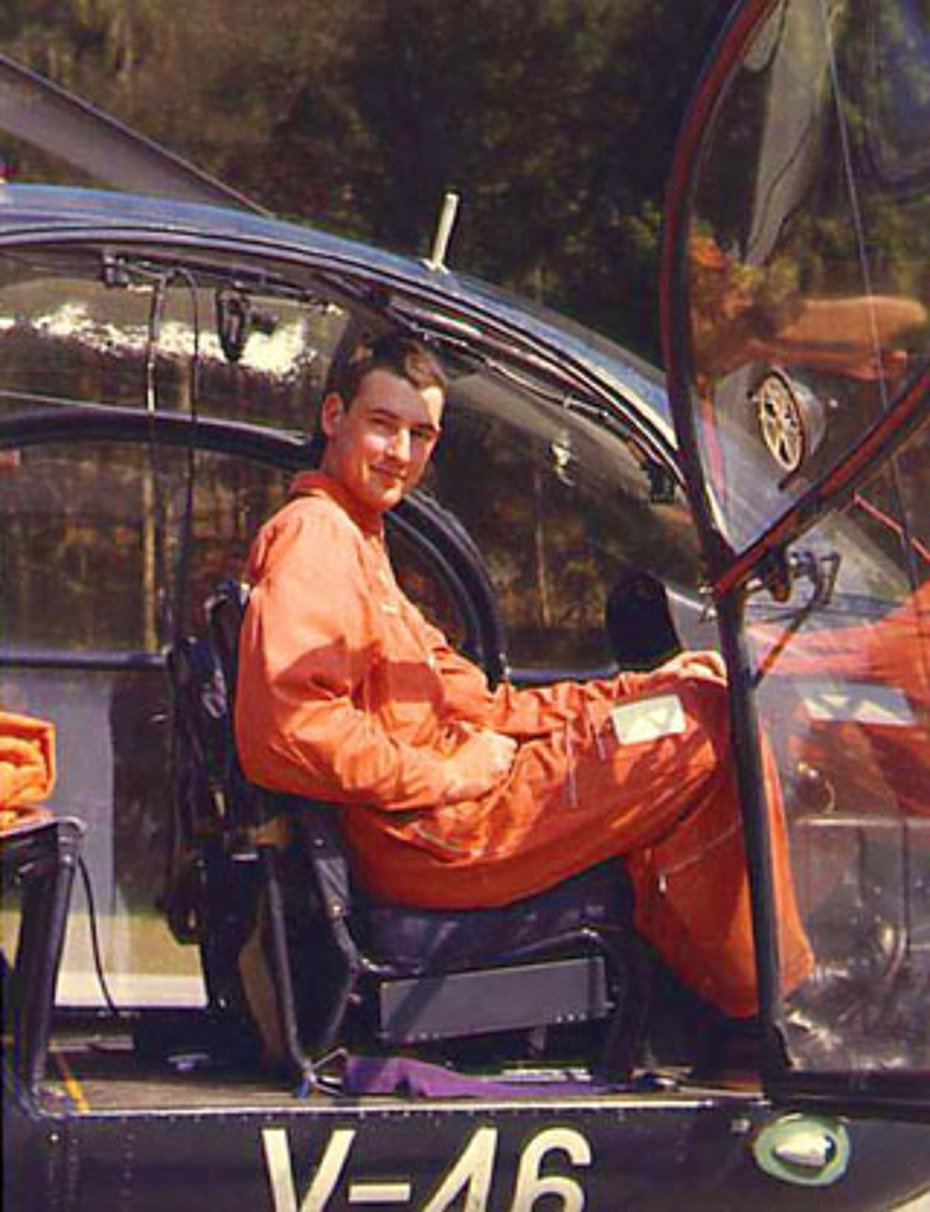
Helicopter pilot
Silvio Refondini began his career as a helicopter pilot almost incidentally. One day during the military pilot school in Locarno as every morning the Swiss flag was hoisted to the sound of the bugle, the officer in charge informed the group of trainee that the army needed a dozen of helicopter pilots. “Those who are interested have to take a step forward” said the officer, but given that everyone wanted to fly on jets to become fighter pilots, nobody moved. The officer then repeated the same appeal adding that in the absence of volunteers he would personally select the candidates. At that moment Refondini thought that given his considerable height (almost 2 meters) he might have been simply judged inadequate to seat inside the cockpit of a Venom, and therefore he instinctively took a step forward, thinking that the formation of helicopter pilot could perhaps offer some interesting job opportunities on the civilian market.
In October 1964 he began his long career as a helicopter pilot which lasted fifty years.
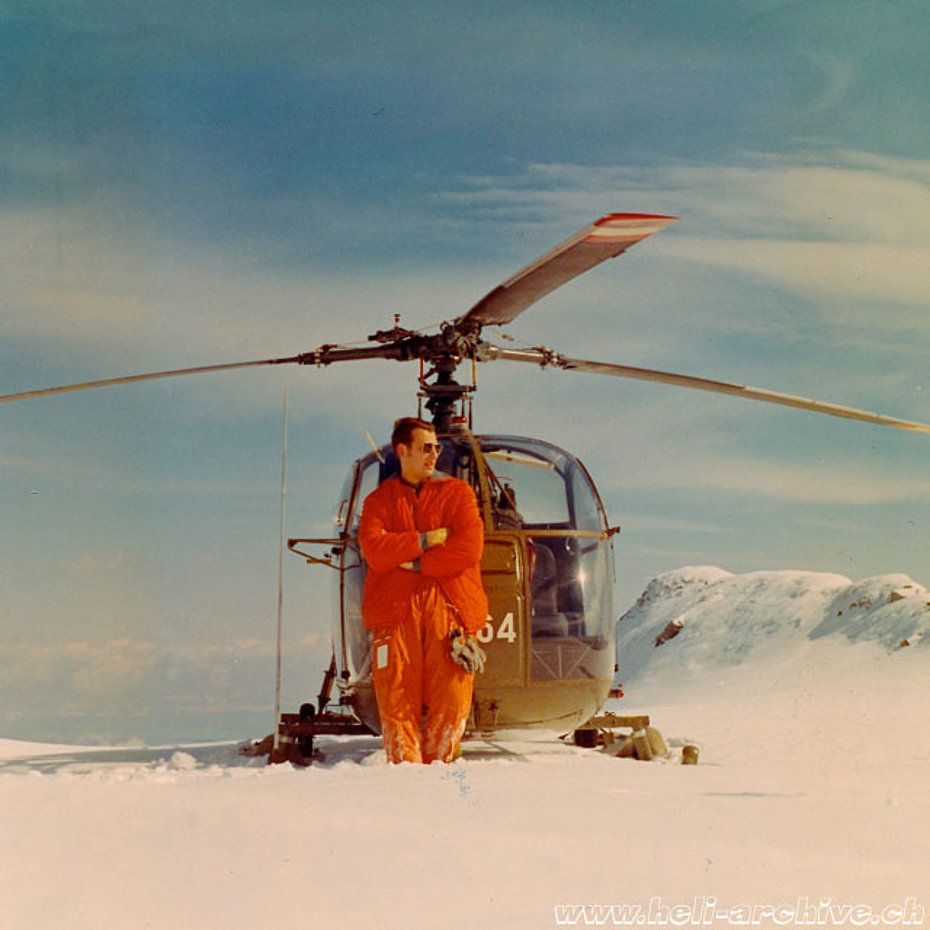
Refondini concluded the military pilot training as the best helicopter cadet and on May 23, 1965 Colonel Burkhard handed him over his military wings at the Lenzburg/AG castle.
The following year from April 28, 1966 he completed the first mountain flying course followed in July 1967 by a second one.
On 8 August 1967, the Federal Office of Civil Aviation (FOCA) issued him the professional pilot license nr. 128.
Meanwhile he continued to fly as an airplane private pilot adding new models to his licence.
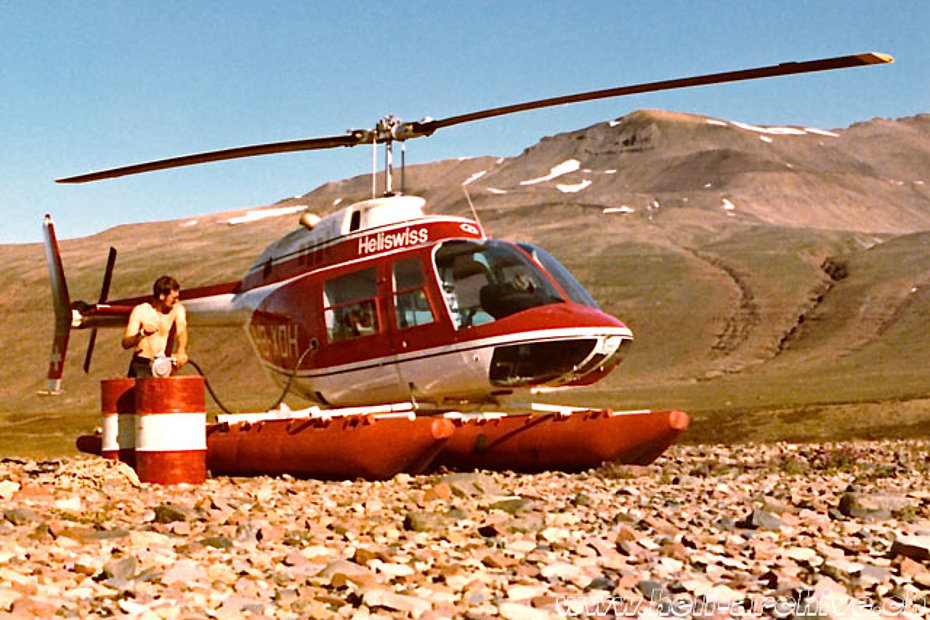
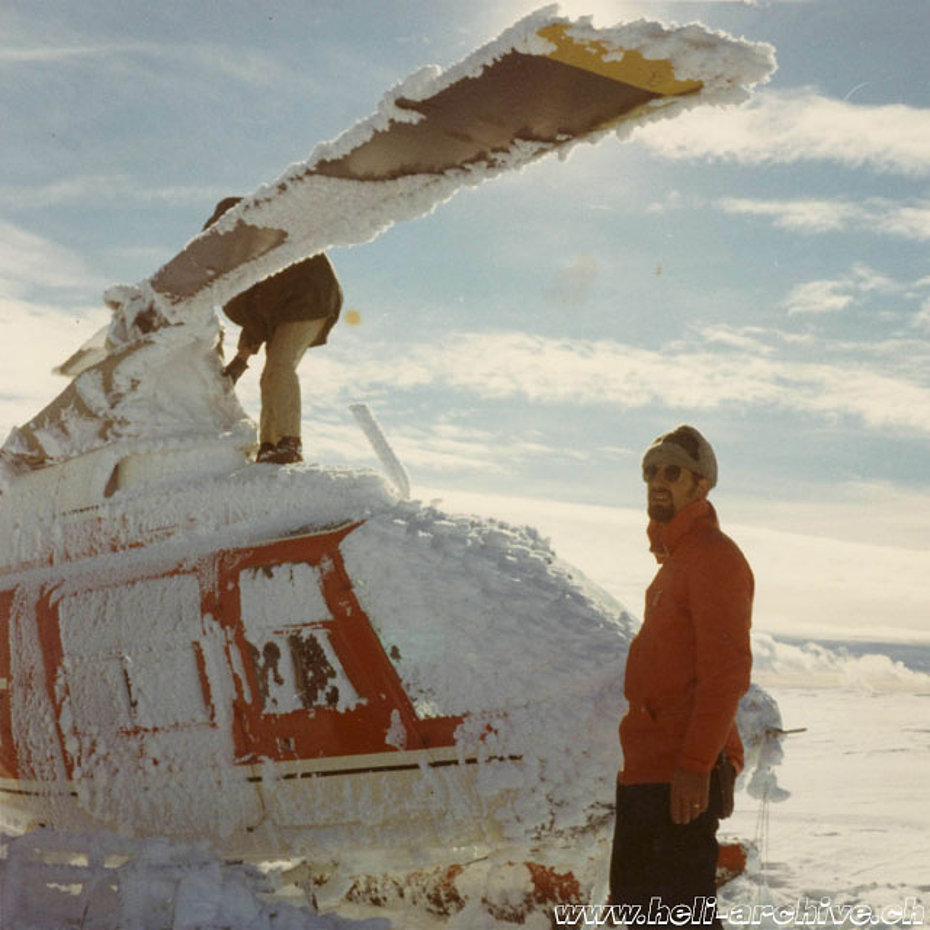
Air traffic controller
At the end of his training as a military helicopter pilot he began to look for a civilian job in the sector that at this time was more fascinating to him, namely aviation. By chance he spotted in a newspaper an announcement for the selection of air traffic controllers. Thus began his new job that led him to work at the Geneva-Cointrin airport. Being a pilot he also had often the opportunity to fly a Beechcraft Bonanza B35 used to train air traffic controllers for the approach sector.
In that period he also met his wife Marlena he affectionately calls Niky with whom he got married in Magliaso/TI on September 23, 1967. The couple has a son, Patrick who was born on March 23, 1969. It should be pointed out that Niky was a member on the only ever Rega crew composed exclusively by women.
Besides his profession as an air traffic controller Silvio continued to fly for his Squadron as a pilot for the militia army account.
Instructor of civilian helicopter pilots
In the spring 1969 Werner Donau who was an inspector on behalf of the FOCA proposed him to achieve a licence as a helicopter pilot instructor. Of course he accepted the proposal and from May 28 on, along with Donau, he begun in Belp/BE the course mainly flying with the SA 318C Alouette 2 HB-XCN. At the time he had accumulated a total of just over 300 flight hours on airplanes and helicopters.
On June 6, Donau handed him over the instructor licence.
Just a few weeks later in Geneva he did additional training with instructor Jean Baer during which he obtained the type rating on the the Hughes 269B. Almost at the same time on behalf of Heliswiss he began his activity as a freelance flight instructor using a Bell 206A Jet Ranger purchased by Aeroleasing. Under the supervision of the chief-pilot Walter Demuth he trained his first two pilots who were employees working for Aeroleasing.
Pilot on behalf of Heliswiss
One day while he was working at the control tower, Walter Demuth told him that there was the opportunity to be employed as a full-time helicopter pilot in Nepal. However nothing happened until June 1971 when Heliswiss offered him finally a job as pilot, but this time in Greenland where the helicopter company was supporting during the summer months a group of geologists employed by GGU (Grønlands Geologiske Undersøgelse).
Silvio Refondini left his job as an air traffic controller on behalf of Radio-Suisse in Geneva and signed a contract with Heliswiss and shortly after he left Switzerland aboard of a Douglas DC-6B along with two other pilots, namely Peter Rutschmann – who later founded the helicopter company Heli-Linth - and Daniel Schneider. Inside the cargo compartment of the plane there were two Bell 206A Jet Ranger and a Bell 47G3B-1.
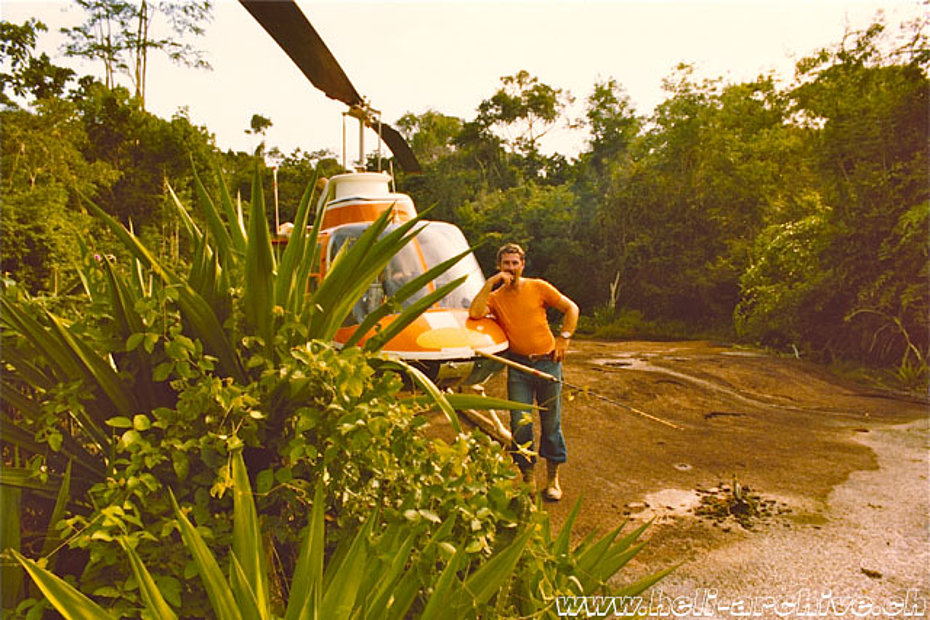
Despite more than forty years having passed he still remembers very well those early flights as a commercial helicopter pilot "The Jet Ranger that I flew was a 206A equipped with a 317 horse power turbine. The first time I tried to take off with the offered load it could barely hover at 10 cm above the ground. Therefore I landed and tried to explain that the helicopter in my opinion it was too heavy. However the chief of the expedition, a bit disappointed, explained that Heliswiss had signed a contract by which the payload was clearly specified as possible. During the second take-off attempt I tried to gain some translational speed, but the helicopter touched the ground at least twice before it slowly gained speed and altitude. At that moment I clearly understood the difference between a commercial helicopter pilot and a military pilot!".
Back from Greenland he worked for a short period in Ticino where he was mainly employed on behalf of Eliticino for the transportation of building materials. In November and December 1971 he obtained the type rating on the Hughes 500C and the SA 315B Lama trained by Erwin Schafrath.
On January 16, 1972 he reached 1’000 hours on helicopters.
From the icebergs to the tropical forests
In June 1972 he left again Switzerland and went to Suriname (South America) for the next four months, where on behalf of Heliswiss he did transportation of personnel and supplies over the hot, humid and dense covered rainforest.
Unfortunately on June 30, 1972 during a take-off the Bell 206 Jet Ranger HB-XCP he was flying had a sudden engine failure due to a fuel contamination which forced him to make an emergency landing.
For the same reason on August 16, 1973 he was renewedly forced to make an emergency landing with the HB-XCP.
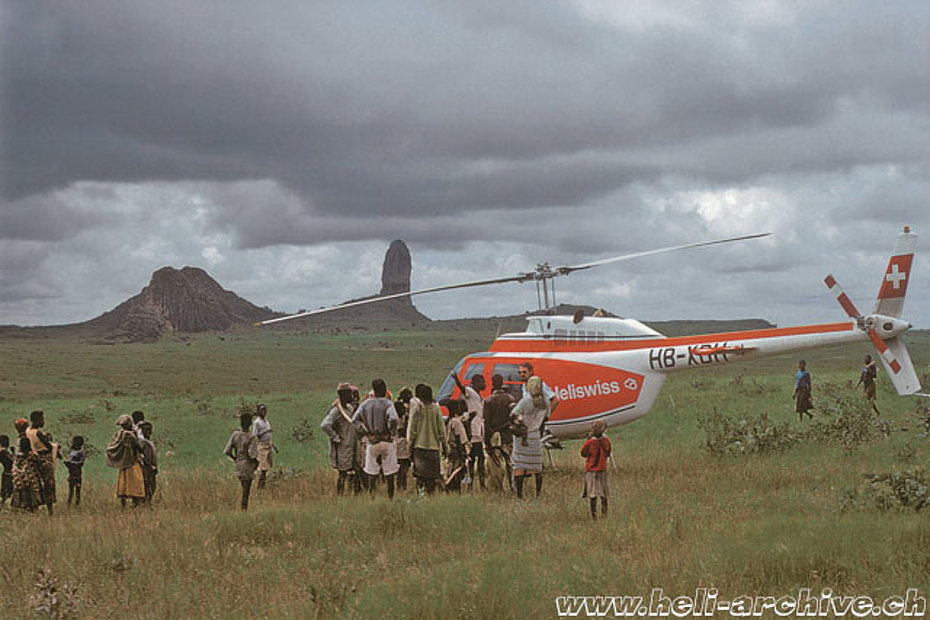
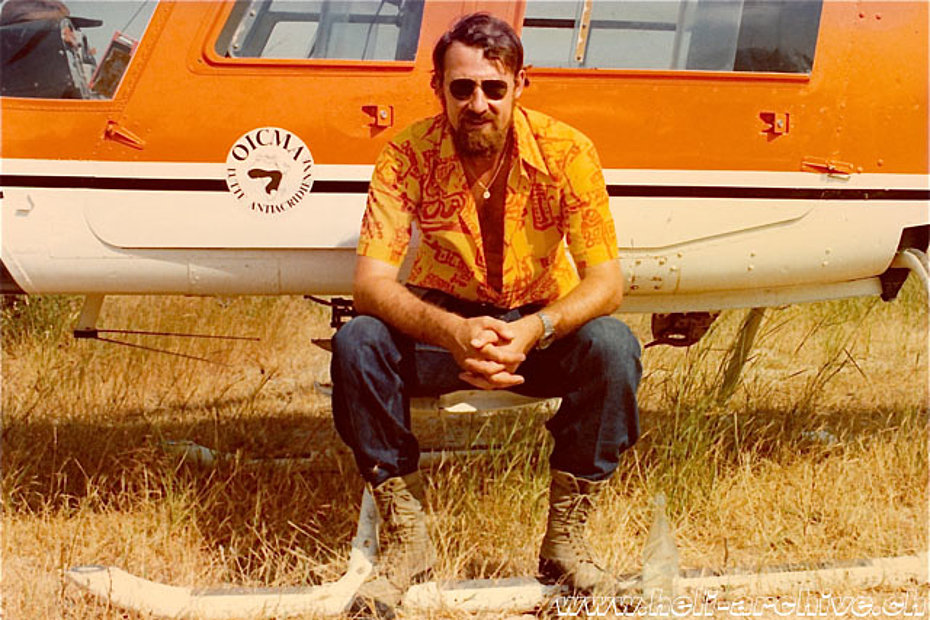
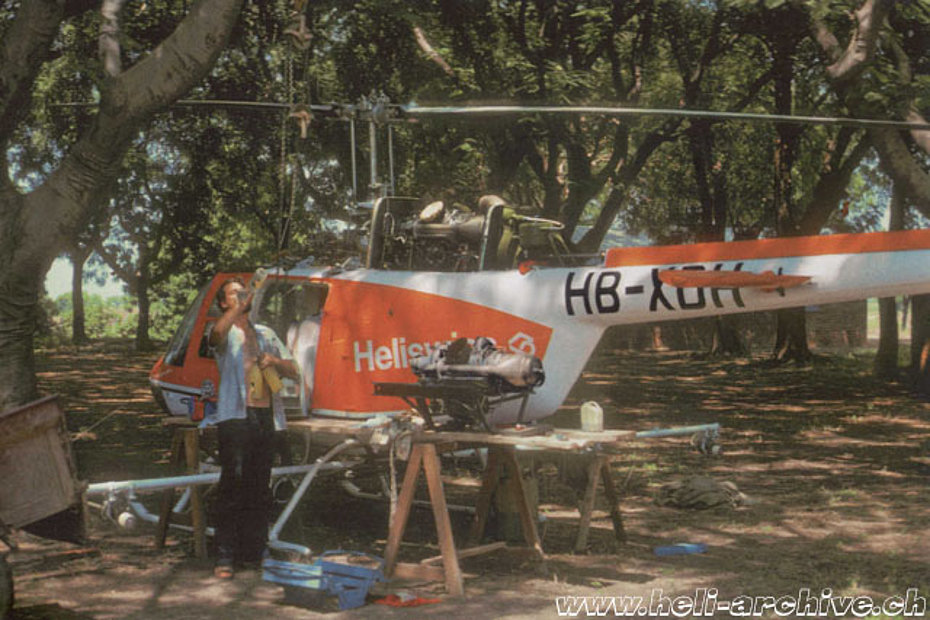
During that time he also obtained the type rating on new helicopters adding to its license the Agusta-Bell 204B (September 1972 - instructor Jean-Bernhard Schmid) and the SE 3160 Alouette III (March 1973 - instructor Jean-Pierre De Vitry chief-pilot of Olympic Aviation based in Athens, Greece, for offshore operations and more).
In addition to the transportation of building materials and people the young pilot began with more challenging missions such as the aerial assembly. In his log book he noted that in August 1973 he assembled for the first time a 40 meters height pylon.
IFR pilot
Between November 1974 and April 1975 he took part in the first training course organized by the school "Les Ailes" based in Geneva to perform instrument flights with helicopters, at that time an absolute novelty in Switzerland.
In July of the same year he took off from Bern and in 12 days he reached Cameroon (Africa) crossing the Sahara desert with a Bell 206 Jet Ranger.
On February 12, 1976 along with Jean-Bernhard Schmid he was the first helicopter pilot in Switzerland to obtain an IFR rating. That same year he also started forest fires fighting operations using the special bucket developed by the firm Chadwick, another novelty introduced in Switzerland in that period. On behalf of Heliswiss he often flew abroad: Greenland, Suriname, Greece (where he performed offshore flights on behalf of companies active in the extraction of oil and gas) and in Africa where he worked for the FAO, a United Nation organisation.
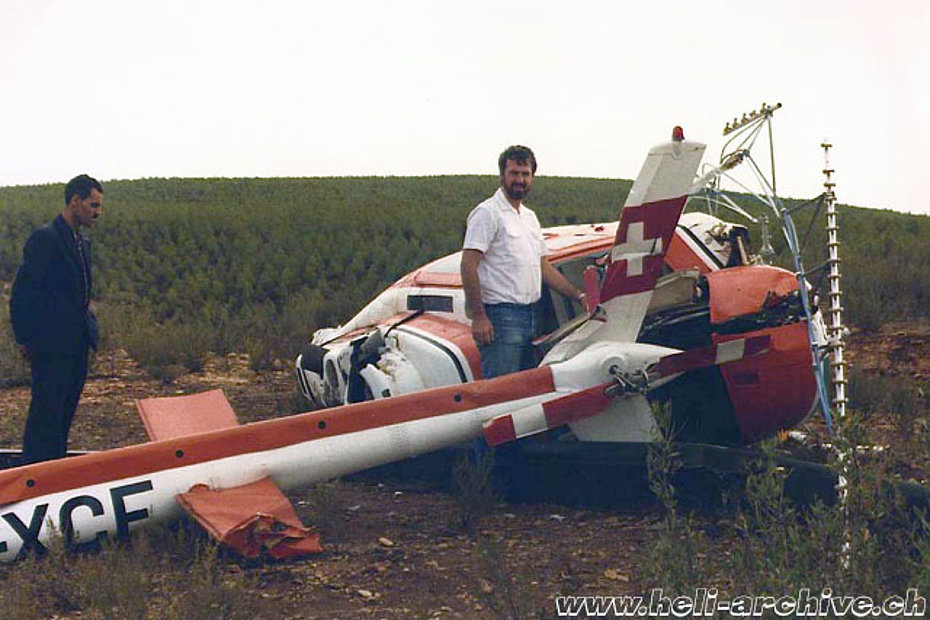
On September 22, 1977 near Beni-Slimane (Algeria) while he was doing spray flights at the controls of the Bell 206B Jet Ranger HB-XCF he had again an engine failure that forced him to make an emergency landing. Even under those circumstances he fortunately left the cabin of the helicopter which was reduced to a scrap with only some bruises and scratches. A few weeks earlier he had reached 3,000 hours of flights.
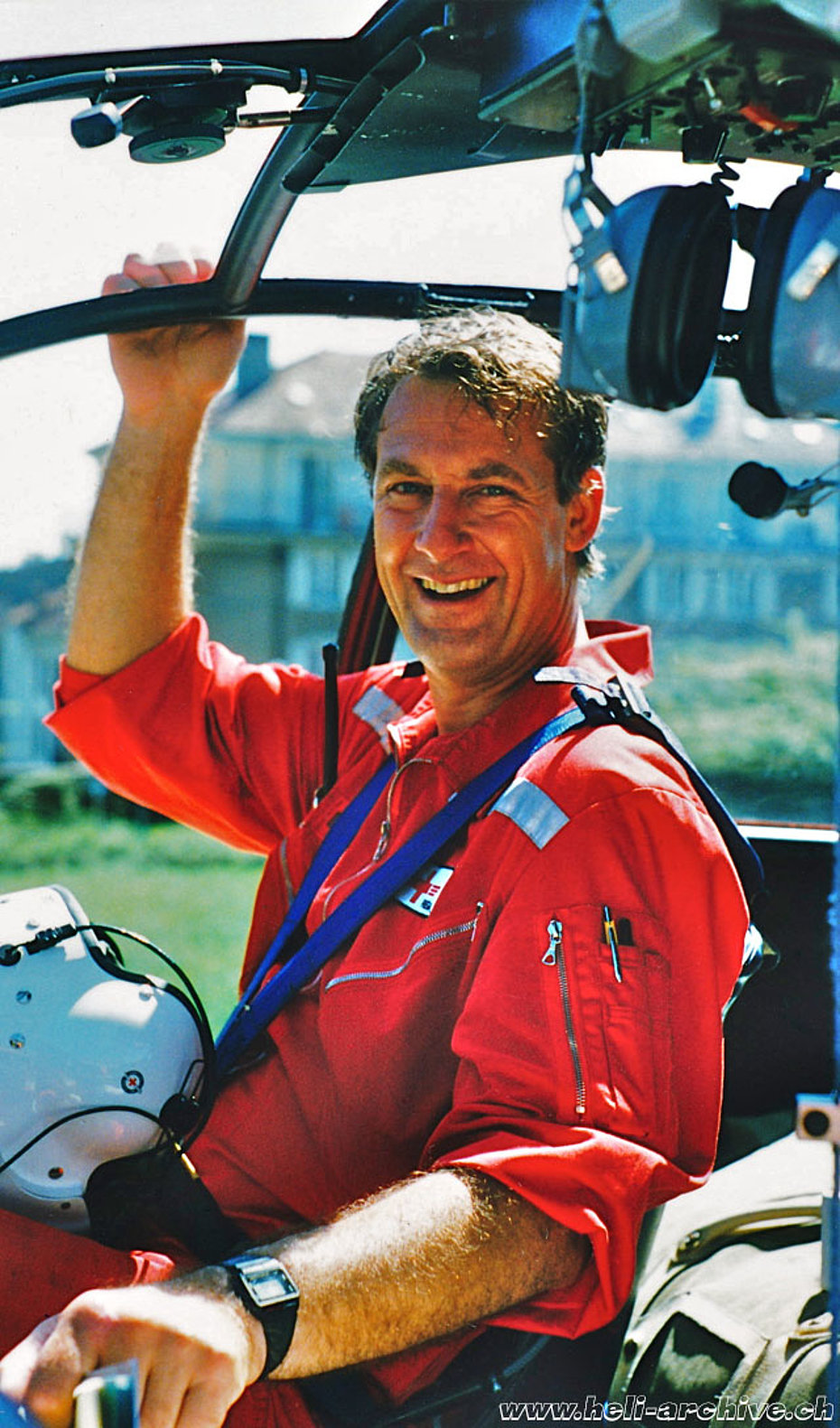
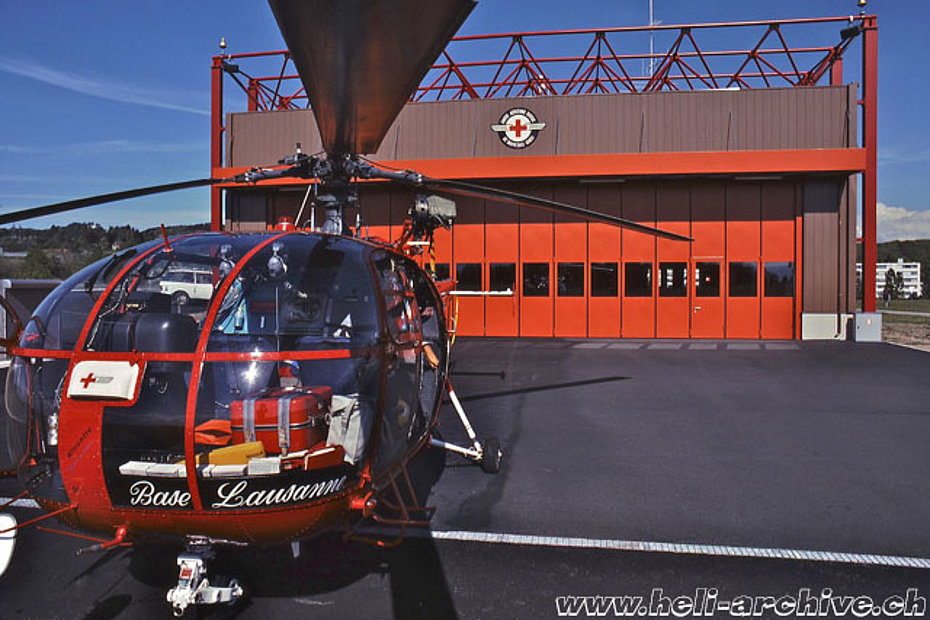
When not employed abroad he was employed as a commercial pilot and flight instructor mainly on the heliport of Gruyères/VD. Obviously as a militia helicopter pilot he was regularly called on duty by the Swiss army.
Rega pilot
During late summer of 1978 he left his job as a commercial pilot on behalf Heliswiss to take over a new professional challenge.
From September 1, he started his new activity as a rescue pilot (and chief-base on the newly created base of Lausanne) on behalf of the Swiss Air Rescue Service (nowadays Rega).
For this reason in the period between 21-27 March he went to Monaco (Germany) for a training course on the Bölkow BO-105.
For more than 20 years with the Rega he performed almost any kind of search and rescue missions, most of which at the controls of the the SA 319B Alouette III HB-XHY (one of his preferred helicopters that he still remembers with great affection) and later with the Agusta A109K2.
As a Rega flight instructor he also had of course the opportunity to train many pilots.
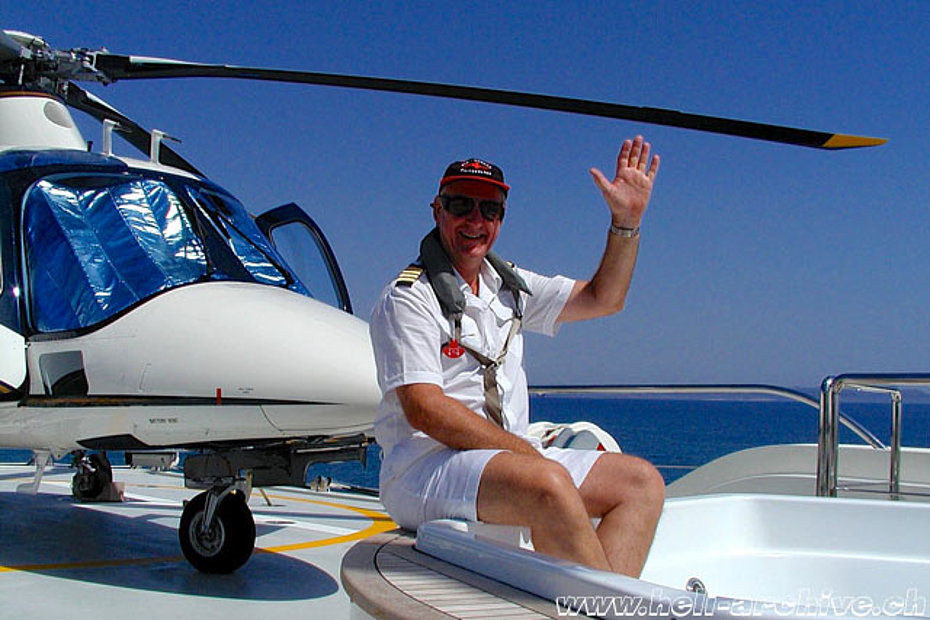
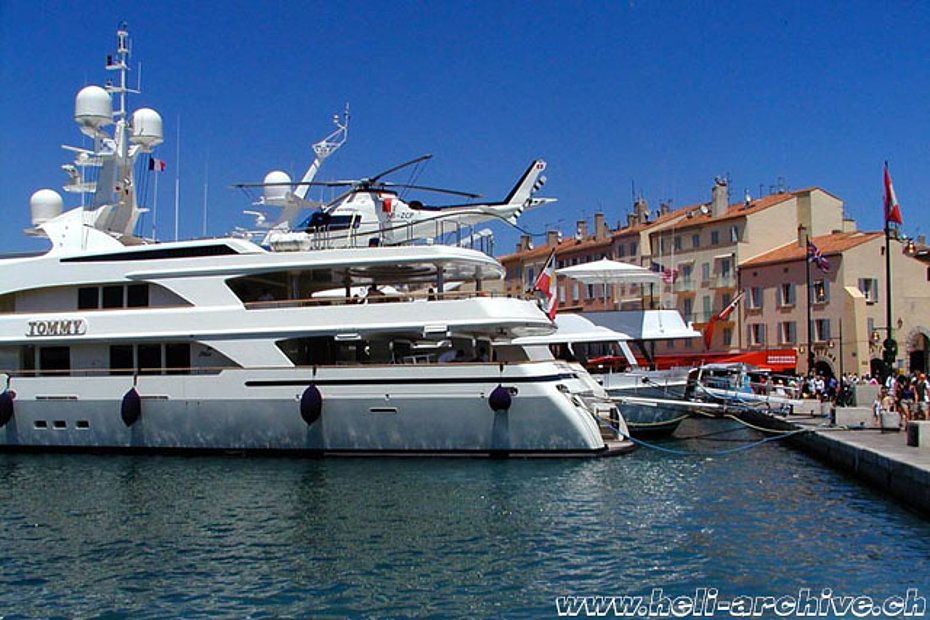
Among the experiences he remembers with great pleasure there is the introduction of the night vision goggles a novelty introduced by Christian Bühler who was at that time Rega’s chief-pilot.
In 1999 after his retirement he was contacted by Agusta who needed a pilot for a series of demonstrations and conferences in England and Indonesia. He later went to Austria where he worked for the introduction of the first Agusta A109 and A119 used by SchenkAIR founded by Dr. Christian Schenk. Using these helicopters he continued his activity as a rescue pilot and flight instructor of behalf of the Austrian SAR helicopter company.
VIP’s pilot
Over the last years of his career as a helicopter pilot he worked for pleasure carrying VIP at the controls of an Agusta A109 embarked on a yacht. During the summer he flew especially in the Mediterranean area and in Florida during the winter.
After his last job as flight instructor and safety pilot on behalf of VIP, in November 2015 he decided to not renew his helicopter license. Officially he has completed the last flight on November 20, 2015 in Altenrhein/SG at the controls of an EC 130B4. However, this does not mean that he has completely stopped flying as he continues to fly with airplanes especially in Switzerland, France and Portugal.
Analysis of a long career
Silvio Refondini belongs to a restricted circle of pilots in Switzerland who have done almost every type of activity in the rotary-wing field. In addition to the many hours of flight at the controls of airplanes he has logged a total of 10'580 hours of flight as a helicopter pilot. Of these 2'280 hours in military helicopters, and 2'338 hours in the shoes of flight instructor.
He has been to Russia as an aviation expert to observe the training program of the pilots who were trained to land up to altitudes of over 5'000 meters. On that occasion he also had the opportunity to perform supply flights for base camps in Tajikistan and Uzbekistan at the controls of the Russian helicopter MIL Mi-8MTV.
Given his wide experience he has been called to be member of the Swiss Aircraft Accident Investigation Bureau as A109K2 CFI for its specialists and member of the International Commission for Alpine Rescue as chairman of the Helicopter Commission. He also worked as a consultant on behalf of various helicopter operators.
His licenses endorsed him to fly the following helicopter models: Agusta A109 (Series), Agusta A119, Agusta-Bell 204B, AS 332/EC 225 (Super Puma), Bell 206 (series), Bell 47 (series), BO-105, EC 120B, Hughes 269, Hughes 369/500, MDD 520N, MD 600N, Robinson R-22, SA 315 Lama, SA 3160 Alouette III Alouette II, AS 350 Ecureuil (series), and EC-130B4.
After his retirement he lived with his wife Niky in a chalet in Les Avants/VD, in the middle of the countryside at an altitude of over 1,000 metres above the town of Montreux/VD.
After dedicating his life to aviation Silvio sadly passed away on March 14, 2021.
HAB 03/2021

